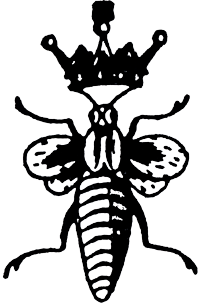2003-4
RN: The past, present, and future of the nurses’ uniform
RN: The Past, Present and Future of the Nurses’ Uniform investigates the often subtle ways in which the uniform, by design, informs notions of identity, professional hierarchy and labor within the field. The exhibition addresses the past, present and future of the nurses’ uniform by combining historical artifacts with the artists’ creation of the Ideal Nurses’ Uniform for the contemporary nurse and futuristic uniforms such as Bioterrorism Nurse, Diagnostic Nurse,Post-Apocalyptic Nurse, and Intergalactic Nurse designed by the artists.Having mined the now defunct Marvin Neitzel Nursing Uniform Company (Troy, NY), Dion and Puett’s research led them to historical nursing and medical collections in the Philadelphia area. The past, or historical portion of RN consists of nursing uniforms, artifacts and documentation dating from as early as the 19th century. Culled from Dion and Puett’s extensive costume archive, the Center for the Study of the History of Nursing (School of Nursing, University of Pennsylvania), The School of Nursing Alumni Archive (University of Pennsylvania), Pennsylvania Hospital, Philadelphia Museum of Art’s Ars Medica collection, The Museum of Nursing History, Inc. and Villanova University, among others, the objects provide a fascinating journey through the evolution of the nursing profession and uniform itself.
Dion and Puett engage the present by conceiving of the Ideal Nurses’ Uniform in collaboration with a focus group formed of retired, practicing and student nurses, again representing the past, present and future of the profession, and from feedback from the nursing community at large through an online questionnaire posted on the FWM website. Through a reconstruction of the actual Marvin Neitzel factory in FWM's galleries, the Ideal Nurses’ Uniforms are manufactured on site by FWM staff as part of the exhibition. Adjacent to the production floor, a media room features various portrayals of “the nurse” as depicted in Hollywood movies, paperback novels and television.
Mark Dion and J. Morgan Puett, in collaboration with The Fabric Workshop and Museum, Philadelphia, RN: The Past, Present and Future of the Nurses’ Uniform (exhibition view), 2003-2004. Photo credit: Aaron Igler.
From their study of past and present, Puett and Dion imagine a future in which the social role of the nurse has been transformed and nurses’ uniforms demand a more sophisticated and innovative design. Based partly on science fiction and new material technologies, Bioterrorism Nurse, Diagnostic Nurse, Post-Apocalyptic Nurse, and Intergalactic Nurse are conceptual premises behind the design of The Nurses’ Uniforms for the Future. For example, with the aid of conductive fiber technologies embedded in the uniform, the Diagnostic Nurses’ Uniform is equipped to assess a patient’s vital signs at the touch of a hand or comforting embrace. The Bio Hazard Nurses’ Uniform protects the nurse in the event of a biological or chemical weapons attack or toxic spill, enabling the nurse to endure danger and still administer care to patients. Part imagination, part applied future technology, The Nurses’ Uniforms for the Future are an extension of Dion and Puett’s study of the history of nursing and application of the information gleaned from their interaction with nurses working in the field.
The Post-Apocalyptic Nurse (ca. 2130) Schematic.
A digitally designed schematic bearing the research of past and present, imagining a future in which the social role of uniforms demand a more sophisticated and innovative design. Based partly on science fiction and new material technologies, these designs are now moving out of the theoretical stages of this early project; depicting a Bio-Terror Nurse, Diagnostic Nurse, Post- Apocalyptic Nurse, and Inter-
Galactic Nurse as conceptual premises behind the design of uniforms for the Future. For example, with the aid of conductive fiber technologies embedded in the uniform, the Diagnostic Nurses Uniform is equipped to assess a patient’s vital signs at the touch of a hand, or comforting embrace. This technology now exists. Part imagination, part applied future technology, I direct these concerns toward
the Department of Interstitchiaries; extending study and exploration in the function of style, inventing new tropes in the production of knowledge for the future of clothing.
36” X 46” Iris print 2003 - 2004













